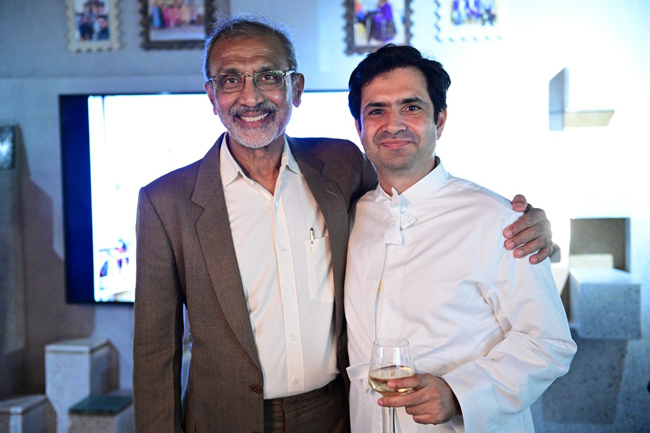100 Years
100 Stories

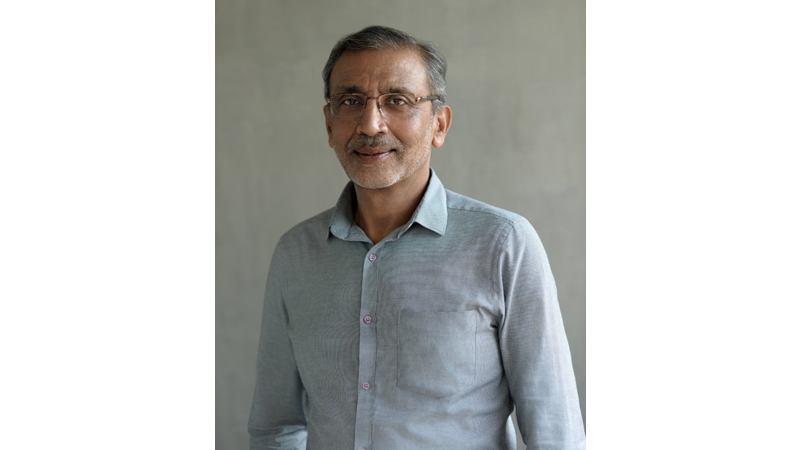
Faiyaz Mukhtiar
For Faiyaz Mukhtiar his articleship at Bharat Tiles and Marble would have seemed like just another professional experience a person goes through. As an aspiring Chartered Accountant, Faiyaz had worked at Bharat Tiles and Marble in 1976. D.F Birdy, a firm which provided accounting services to Bharat, had assigned the job to a young Faiyaz. Perhaps he had not envisioned then that he would go on to play an instrumental role in charting out the future course of the company where he had done his articleship.
Faiyaz completed his Chartered Accountancy and after a brief stint in Muscat, Oman, came back to Bharat Tiles in 1988. He was known and liked by the directors of the company and his part time job at Bharat soon became a full time one. The company was helmed at that point by Tehmi and Rustom Sidhwa.
Faiyaz recalls that Bharat was not in the best shape when he joined the company. He says, “Cement was under regulation at that time. All cement tile companies had to register with a government body, who in turn would give us a quota of cement that we could use. There was a tremendous shortage of cement. Every month we used to get some 10 metric tonnes or 200 bags, and we could do some operations in that.”
While the manufacturing of the company’s beautiful patterned tiles had stopped long ago and its terrazzo products could not compete with the cheaper vitrified tiles that had flooded the market, Bharat displayed adaptability and developed an industrial grade tile called Stilan® in the 1960s. Marketing of the brand had been amped up in the 1970s. The Bharat tile had always been strong, but the Stilan tile was special. Faiyaz says, “More emphasis was laid on making the surface abrasion resistant. In one of the ads we used to say it is next to diamond in terms of hardness”. Diamonds are 10 and the abrasive grain used was 9 on the Moh scale ! Very little was used of these expensive grains, but it was enough to make the top surface abrasion resistant. Stilan® was positioned as the ideal tile for all industrial settings including mills, warehouses, factories, and power plants. Selling Stilan® to textile mills was Faiyaz's responsibility. Faiyaz says. “ The Lalbagh and Parel areas all had mills, among which Century and Bombay Dyeing were two of our biggest customers. Stilan® was used on their factory floors and their stores department would give us repeat orders. Century mills were probably our oldest continuous customers. Until the 1980s they used to buy from us.”
The challenge here for Faiyaz was time. Mills ran for 24 hours, on shifts. Only a small gap was allowed for the maintenance of the machinery. In such a situation installing tiles was a race against time, and the tiles didn't even get the curing period they needed! This contributed to large replacement orders as tiles developed problems. Faiyaz recalls telling officials of factories and mills to change the wheels of their forklifts from metal to fibre, to ensure the tiles had a longer life. Another prominent client handled by Faiyaz was the Tata power plant and substations where the anti static nature of these tiles and their durability made them an ideal candidate. Faiyaz recalls that many of the suburban railway stations in Mumbai’s Central Railway line had been supplied with Stilan® tiles.
Faiyaz remained a steadfast asset to Tehmi Sidhwa and Dilnavaz Variava as they navigated the difficult eras of the company when loans had to be repaid and employees had to be retrenched to keep the company afloat. Throughout this time, he recalls how Tehmi Sidhwa never gave up on her principles, “There was a black market for cement in those days. Many people would offer Mrs Sidhwa money in lieu of our cement permit. She never did and as a company we never did these things but there were builders and others who required cement and could pay in black for it. We would have earned much more by doing that rather than making a tile, but still we never did it.” Dilnavaz adds an anecdote about a group company, Litecrete Products, where Mrs Sidhwa surrendered her quota for two quarters of the year to the Government, rather than sell the cement in the black market, as the company had no orders. When she repeatedly tried to get the quota restored, pleading that she had surrendered the quota for 6 months as the Government had said this should be done if the cement was not required, the official in the government's cement department retorted that it was her fault if she was following values of the 16th century !
When Dilnavaz Variava decided to display the company’s heritage patterned tiles and their moulds at the Kala Ghoda Exhibition in 1999, Faiyaz remained by her side, scouting for tile makers who could carry out what now seemed to be an outdated practice. Not only that, Faiyaz accompanied her to the exhibition, engaging architects and designers in conversations around the eclectic, new display of tiles. Dilnavaz makes no bones about the fact that Faiyaz is the rock of the company. When she took a leap of faith in attempting to revitalise Bharat and relaunch the heritage range tiles, she asked Faiyaz “Should I buy the company? Do you want to try and turn it around or get a golden handshake and make a life for yourself in some other company?” It was a no-brainer for Faiyaz. He was ready for the challenge.
He has displayed remarkable adaptability and an ability to move with the times. As the company reorganized itself along more professional lines, put together a more energetic sales force and revamped their marketing strategy, Faiyaz has been constantly involved in the process of learning and unlearning things. Under him Gaaia Contractors, the company arm responsible for floor installations, recruited able contractors who could deliver work that matched Bharat’s standards.
Faiyaz has been the face of the company, interacting with architects and clients before a sales force was appointed officially. Some of the most prestigious recent contracts of the company, including the Royal Bombay Yacht Club, the Bombay High Court and the BMC building, have been handled by Faiyaz. He recalls the exacting detail required by Architect Vikas Dilawari on the Yacht Club project where the latter was very particular about it, “Aise hi chahiye, change karo, colour nahi aa raha hai.” (This is how it should be, change it, the colour isn’t coming)
Faiyaz has worked long hours , particularly during the difficult days when the company was being turned around, and the understanding and support he must have received from his lovely wife, Nishrin , and from his children Mustafa and Zahabia, must have been vital for this.
Faiyaz is the man running the show from the background. He has handled the factory operations of the company, the place where the magic happens. He identifies finding the right workforce as one of the most challenging parts of his job. The product is the hero and hiring the right skilled labour for it is not an easy task. He recalls how it was in the early days, when the brand was being revived and he had to look for labour which had the skill of crafting tiles. “ Somehow or the other we got a knack of it through trial and error. We learnt how to innovate. Getting the pressman is important. And the thing is you cannot get them from anywhere! Because there are very few factories which manufacture these things and none do it like us. So leaving their present job and learning some new techniques becomes very difficult. And then they come with their own baggage and their own habits from some other factory. So the main task of the supervisor was to train these guys. So the pressman was trained and they used to train their helpers to acquire the same skills. That is how most of the pressmen graduated from being helpers. This is all in house only”
Faiyaz also calls himself a stop gap sales guy. He sits in his office till late and when he sees customers in the store he comes down to assist them in the selection. “The excitement in selling a Bharat tile is fantastic. That is one of the reasons I do it. Here you improvise the whole situation and the person who comes in is himself impressed by it, he himself is lost for choice as to what to buy. We bring him so many things, he may jump from one product to another product and then we bring him back to some level. That is because there is so much range, so many colours, designs. Every time it is a unique selling experience and every time there is a new customer there is a new story.”.
As the revival of the brand ensued, Faiyaz has worn many hats. One of his tasks was guiding and mentoring the sales representatives of the company in different cities where the company had set its sights. Jawahar, BFT’s Goa representative recalls that in his early days Faiyaz was crucial in explaining the different aspects of the tile to him. “Most of my questions are answered by interacting with Faiyaz sir. I got superb knowledge from him. I used to call him at least 8-10 times daily. That helped me a lot. From A to Z, he is the guy who gave me a lot of knowledge about this product.” Sumanta who handles the sales out of Hyderabad mentions how he received sound advice from Faiyaz when he was being interviewed for the role. “Faiyaz sir told me would like to build a team which associates for the long term.” Dilnavaz Variava says “Firdaus and I value his honest advice, his loyalty, his readiness to take on any challenge and work hard to make it a success, and his equable temperament and low ego that makes him handle even very difficult people and situations without losing his cool !”
Faiyaz is a long term player. He has run the marathon of the company’s ups and downs with fortitude. He is the backbone of the organisation, the man who can be approached to solve every problem with agreeableness and firmness. He remarks with some humour, “Now anytime I walk in, the first thing I see is the floor. While watching a film also, I see the floor. That’s how we have become wired.”
You may also like
-
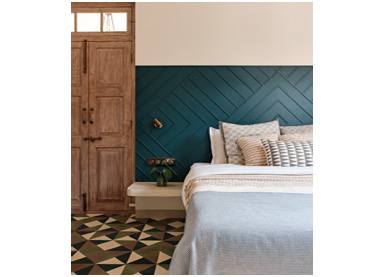 56Holiday with BharatView breathtaking holiday homes done up in Bharat's floors.Read More
56Holiday with BharatView breathtaking holiday homes done up in Bharat's floors.Read More -
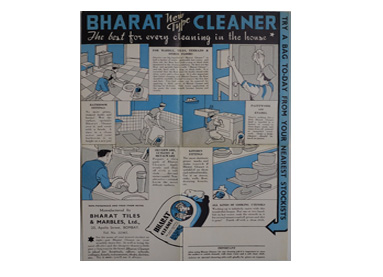 57Archival Find: Bharat Cleaner adWe found one of Bharat's earliest products, the all-surface cleaner, while rifling through the archive. Give it a look !Read More
57Archival Find: Bharat Cleaner adWe found one of Bharat's earliest products, the all-surface cleaner, while rifling through the archive. Give it a look !Read More -
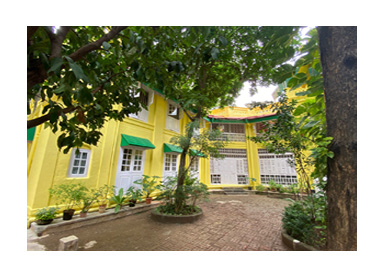 58My Home Heta PanditFrom its early Parsi roots to hosting Bollywood legends, this colonial gem stands as a witness to history. Now meticulously renovated with Bharat's tiles while preserving its vintage charm.Read More
58My Home Heta PanditFrom its early Parsi roots to hosting Bollywood legends, this colonial gem stands as a witness to history. Now meticulously renovated with Bharat's tiles while preserving its vintage charm.Read More


